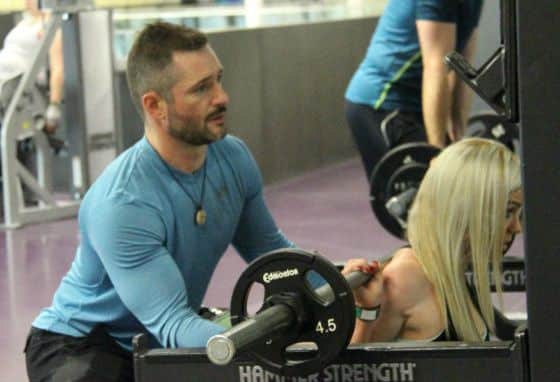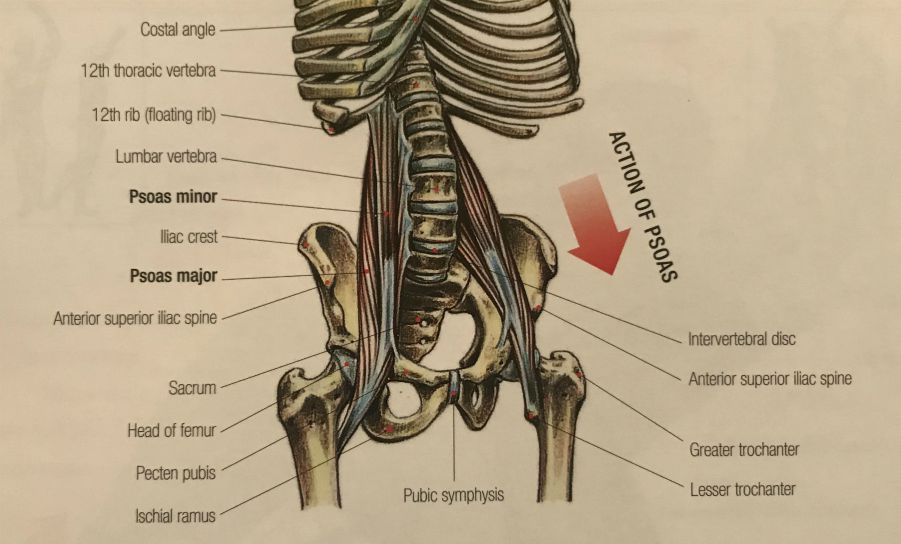CORRECTIVE EXERCISE
These are the most common physical issues people have and the corrective exercise used to fix each one.

by Travis Wade
The best way to explain corrective exercise for the most common imbalances is with a video.
This is a great adducting movement that I superset with abducting movements that I forgot to add in the above video. Put the band on the outside of the foot then on the inside and do the same movement.
Lengthen and Strengthen
That’s how to strengthen the most common weaknesses. Corrective exercise requires lengthening and strengthening in the right areas. These next few videos are how to lengthen in the most common places that are tight. This first one is for the hip flexors. The hip flexors get tight because we do so much sitting and it shortens the muscles.
Corrective Exercise For Lordosis

Lordosis is over-arching of the lower back. Lordosis can lead to pain and injury, and the tightness of the psoas is usually the cause. I am showing you the most common causes of all of these imbalances, but of course, it’s not going to be the cause 100% of the time. If you use the corrective exercise in the above video, it will help to lengthen the psoas and hip flexors.

From Strength Training Anatomy by Frédéric Delavier. Page 171.
Corrective Exercise For Kyphosis – Upper-Cross Syndrome
These next couple of corrective exercises are for the pecs. With upper-cross syndrome, we need to strengthen the back muscles, but a lot of times, we need to lengthen the pecs as well. Upper-cross syndrome is the most common cause of carpal tunnel syndrome.
Body Mechanics
Body mechanics are fundamental in helping realign the body. If you do corrective exercise in the gym but have terrible mechanics in your daily life, you are taking two steps forward and three steps back. I am just going to go over a few things that people do and how to correct body mechanics. I’ll start at the feet again.
Most people have some duck foot going on or maybe some pigeon toe. When you walk or run, you should have the toes pointed straight ahead, not at an angle. Every exercise in the gym must be done like that as well. It takes practice, but it becomes natural after a while.
Corrective Exercise For Knock Knees
Knock knees are very common as I mentioned, and the glutes usually need to be strengthened to help fix that. When people lock their knees (straighten them all the way), it makes this issue worse. The most common cause of knock knees is when people sway when they walk instead of rotating the shoulders. Watch the video for a better explanation.
Corrective Exercise For Shin Splints and Heel Spurs
Shin splints are caused by tight calves about 80% of the time. The following video shows you how to mobilize the whole backline, which includes the calves. The backline is calves, hamstrings, glutes, spinal erectors, and the back of the neck. When you lean forward onto the toes, you will feel it more in the calves. If you lean back onto the heel, you will feel it more in the hamstrings.
Heel spurs are usually caused by tight calves or tight arches of the feet. When the calves are tight, they pull on the Achilles tendon, which draws on the periosteum of the heel. The periosteum is the connective tissue casing around the bone. It tears away from the bone, and calcium builds up in the space between the periosteum and the bone. Chances are it’s the arches of the feet pulling on the periosteum, and you will need to roll out your feet.
Bunions and corns are caused by tight arches as well usually. Please stay away from high heel shoes at all costs to prevent many foot problems including tight arches.
I hope these videos helped you. If you know someone that can use some corrective exercise, forward this on to them. If you have any questions, please feel free to ask. One last thing is posture is depicted by our nervous system. The nervous system determines our muscle tone. Without the nervous system firing muscle we would all be a puddle on the floor. To train the nervous system to hold your body up in a proper posture you just have to remind the nervous system to do what you want it to do; repeatedly. It takes about 2,000 times for your nervous system to do something automatically without you having to tell it what to do. Kind of like learning a musical instrument. Practice and repetition. You will forget at times and it might have even been a week since you reminded your nervous system to hold your body up properly but don’t give up. It takes about 2,000 times so its a guarantee you will forget at times. You will need to lengthen and strengthen in the right areas as well so you will have the ability to hold yourself up properly but you will also need to train the nervous system as well.
Want To Get Started On A New Lifstyle Right Away?
Or
Would You Like A Plan To Achieve Your Fitness Goals?
Sign Up For Online Personal Training!


